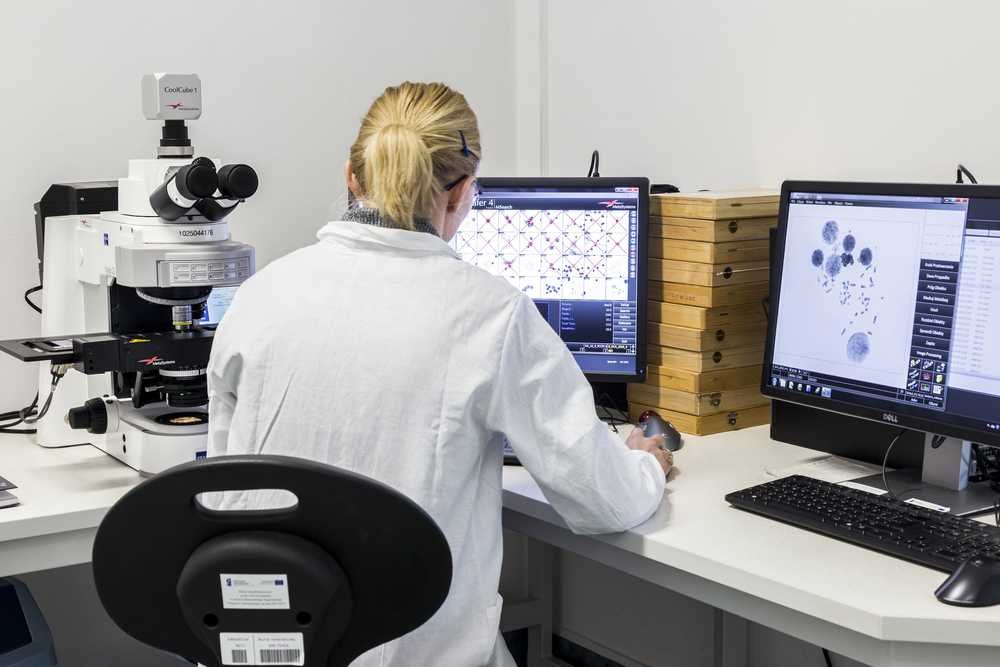From the inception of simple triplet-optic microscopes in the 1800s to today’s cutting-edge intelligent optical data processing, ZEISS has consistently spearheaded the development of optical technology for almost 180 years. This long-standing commitment to innovation is a testament to ZEISS’s enduring expertise and leadership.
When the visionary Carl ZEISS sold his first-ever compound microscope in 1857, little could anyone have predicted that this company would go on to create the first super-resolution microscope about 150 years later. Today, ZEISS technology powers a variety of electron and X-ray microscopes along with unparalleled image analysis systems that serve a wide range of industries ranging from medicine and biology to material and data analysis.
Here’s an insightful look at how the company made strides in optical innovation and continues to lead the industry.
The Technology Behind ZEISS Microscopes
ZEISS Microscopes carry different technological systems based on their purpose and build. Their first microscopes relied solely on glass lenses that magnified the subject for detailed viewing. The initial designs for this technology came during the mid-1850s. Even today, ZEISS still uses advanced combinations of convex lenses to manufacture microscopes that work through light or compounded lenses.
Another microscopy tech you’ll find in ZEISS Microscopes is using electrons for magnification. Their electron microscopes project high-voltage electrons against a selected specimen to generate images that are millions of times larger than their original size.
ZEISS microscopy also uses X-ray technology for enhanced magnification of samples that do not need detailed treatment like electron microscopy. Here, x-rays shot through the specimen samples can generate images between 50 and 500 nanometers on average.
ZEISS systems also utilize ion microscopy in many of their solutions to ensure accurate magnification of small, needle-tipped specimens.
Popular Models of ZEISS Microscopes and Their Applications
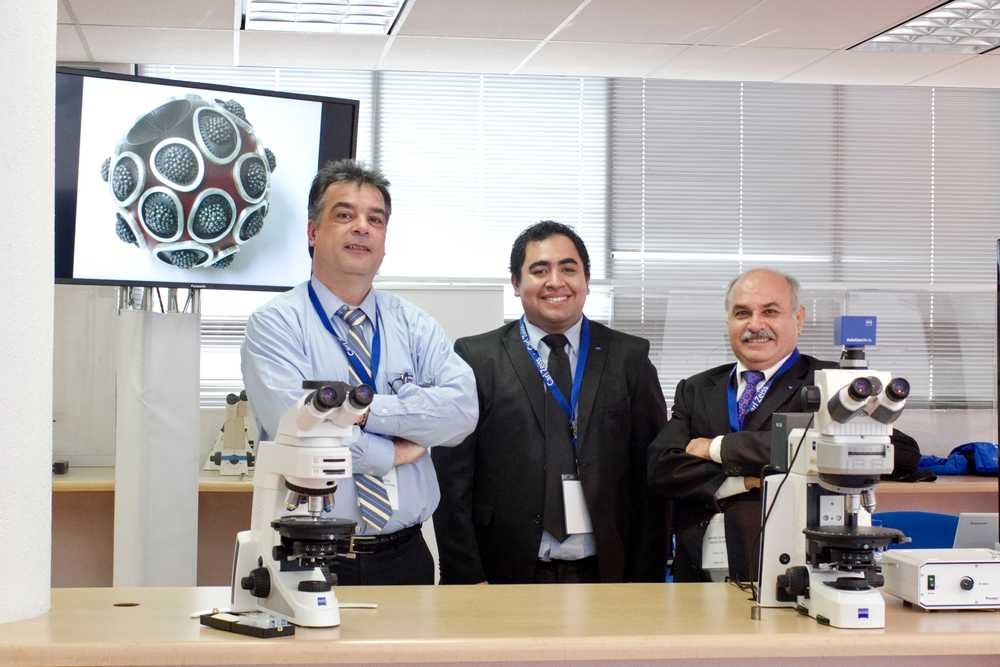
The true test of any optical system comes in real-world applications and tangible results. ZEISS Microscopes enjoys a long history of providing top-notch optical and microscopy technology across different sectors and industries.
Let’s look at a few ZEISS microscope models and how they serve professionals by delivering elite solutions for maximum analysis.
1. The ZEISS Axio Imager 2
The ZEISS Axio Imager 2 was designed to enhance existing industrial microscopy and take its capabilities to new heights. With stable imaging, modular designs, and fast reproduction of results, the Axio Imager 2 remains a favorite in any industry that requires accurate material study and analysis.
The Axio Imager 2 has proved incredibly useful in particle analysis and investigative studies across metallic, non-metallic, and liquid-crystal samples.
Metallographic applications like the study of geoscience specimens, solar cells, magnetic materials, and traditional metals all lead to impressive findings.
2. The ZEISS Stereo Discovery.V8 ($3,850.00)
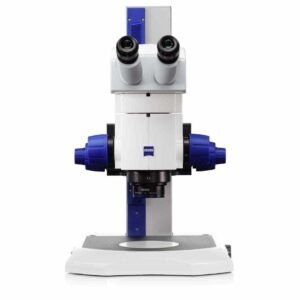
The Stereo Discovery.V8 by ZEISS is an advanced optical magnification system that provides reliable analysis, powerful zooming features, and crystal clear magnification for any organic or biotic specimens.
The ZEISS Stereo Discovery.V8 is best used in developmental biology research. Whether you’re looking for clear illumination of tiny embryos or a dissected view of an insect’s anatomy, the Stereo Discovery.V8 provides the perfect analysis system.
You can switch between motorized or manual X-Y stages depending on context and pick either an LED or cold light for illumination. The 8:1 zooming feature gives customized magnification regardless of the specimen’s size and visibility.
3. ZEISS AXIO IMAGER .Z2m ($9,999.00)
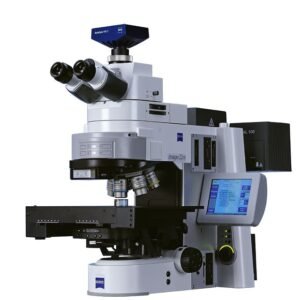
Choosing the right microscope can significantly impact the quality and efficiency of your research or clinical diagnostics. The ZEISS AXIO IMAGER .Z2m is a top-tier microscope designed for advanced applications in material science, life sciences, and clinical research.
The ZEISS AXIO IMAGER .Z2m is part of the ZEISS Axio Imager series, known for its high precision, flexibility, and superior image quality. It is designed to meet the demanding needs of researchers and clinicians who require reliable and detailed microscopic analysis.
The ZEISS AXIO IMAGER .Z2m, with its advanced features, modular design, and superior imaging capabilities, is an excellent choice for professionals in these fields. By understanding your specific needs and the key features of this microscope, you can make an informed decision that enhances your work and contributes to significant advancements in science and medicine.
4. The ZEISS Axio Zoom.V16
The Axio Zoom.V16 is a high-tech on-axis scope that helps scientists and researchers work with specimens across a broader range. It’s an improved version of the earlier Axio Zoom models which had similar features but without the same zooming and clarity capabilities.
The Axio Zoom series microscopes deliver both high-resolution imaging and high speeds. But the primary advantage lies in its wider range of zooming capabilities. So, it’s ideal for any application that requires a careful study of wide views and a clear analysis of detailed components.
For instance, an industrial study of lithium-ion batteries may require both low magnification for a wide view and high magnification for minute details. A conventional microscope may require you to stitch together different tiled images to form a larger picture.
With the Axiom Zoom.V16, you get 16 levels of zoom that give you both views on the same device. So, scientists can use it for a wide variety of material and biological studies.
5. Zeiss Axio Observer Z1 ($10,666.00)
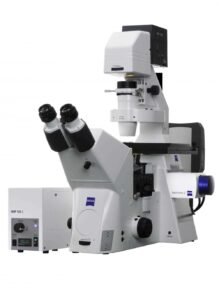
Discover the Axio Observer Z1 from Zeiss, a leading inverted microscope designed for advanced research in life sciences. Key features include superior image quality with high-resolution optics, flexible modular design for various applications, integrated fluorescence illumination, and precise motorized components for automation.
Advantages of the Zeiss Axio Observer Z1 include enhanced ease of use, unparalleled versatility, and the ability to capture detailed, high-contrast images for in-depth analysis. Ideal for cell biology, developmental biology, and live-cell imaging, this microscope sets a new standard in scientific exploration.
ZEISS Microscopes in Action: Case Studies and Research Breakthroughs
ZEISS microscopes have a long-standing tradition of being associated with distinct scientific discoveries and events. Here are a few noteworthy instances where ZEISS microscopes served crucial roles in major scientific breakthroughs.
Robert Koch and Bacteriology in 1900
Nobel laureate Robert Koch discovered how bacteria serve as causal agents for some of the most pressing illnesses of his time including TB and cholera. He used ZEISS microscopes in the late 1800s and early 1900s for all his studies on microbiological culture.
He isolated these infectious diseases that cause tuberculosis by studying and testing both tissue and fluid samples. The breakthrough discovery of the pathogens came through the crucial analysis delivered by ZEISS microscopes of his time.
ZEISS microscopes and Cell Division in 1943
In 1936, the soon-to-be Nobel laureate Frits Zernike designed and built the first version of a phase-contrast microscope. Although this initial prototype wasn’t as refined, it was still a breakthrough model for its time.
In less than 7 years of further development, Kurt Michel used one such phase-contrast microscope to produce the first video (via time-lapsed images) of cell division ever recorded.
This footage led to wide interest and research in cell functions and the resulting discoveries in Meiosis and Mitosis continue fuelling advanced studies about life and physical development of the body even today.
Revolutionary True Confocal Imaging in 2005
Throughout the 20th century, the development of microscopes was limited to the constraints of confocal imaging. Any tissue or organism exhibiting fast change or progress cannot be captured efficiently on imaging. Most times, further development studies must be performed at extremely high speeds with varying levels of magnification.
In 2005, ZEISS developed its revolutionary LSM 5 Live, an advanced optical and microscopy system that could handle true confocal scanning that did not compromise image quality and accuracy.
This device could handle up to 120 confocal frames per second with scanning speeds going over 60,000 lines per second. The microscopy industry took a virtual leap forward to the 21st century with this breakthrough technology that many advanced optical systems use today.
How to Choose the Right ZEISS Microscopes for Your Needs
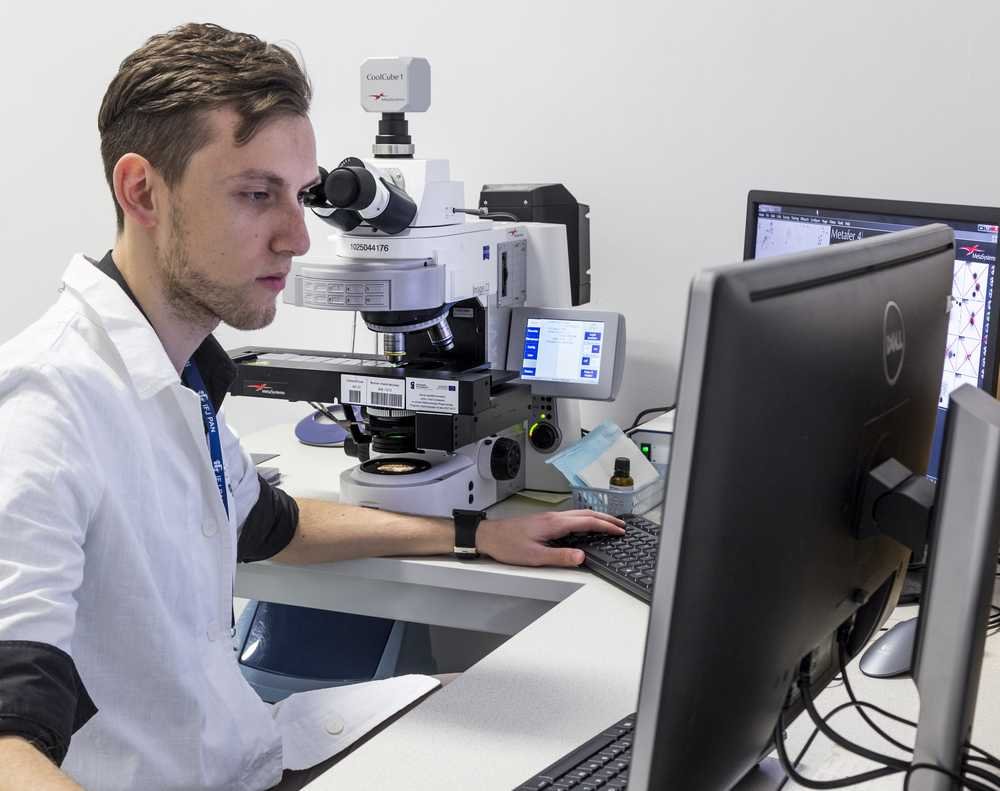
ZEISS systems offer optical solutions for any type of analysis, magnification, and application. However, choosing the right model depends a lot on the correct understanding of your goals, the capabilities of specific ZEISS microscopes, and your specimen type or industry.
When it comes to high-quality microscopy, ZEISS stands out as a leader in the field. With a range of microscopes designed to meet various scientific and medical needs, choosing the right ZEISS microscope can seem daunting. However, by understanding your specific requirements and the features offered by different ZEISS models, you can make an informed decision that enhances your research and diagnostic capabilities.
Here are some insightful tips on how to narrow down the ideal ZEISS microscope for your projects.
- Start by understanding the types of microscopes offered by ZEISS. Their systems range from simple compound microscopes to advanced stereo microscopes.
- Compound Microscopes by ZEISS can handle most general magnification and analysis. Consider any ZEISS compound models if you’re requirements include forensic studies, academic labs, or basic pathology studies.
- The ZEISS electron microscopes remain ideal models for extended industrial analysis. For instance, the Axio Imager 2 is an excellent electron microscope for handling mineral specimens regardless of whether they’re metallic solids or liquid crystals.
- Many studies today require dissection of specimens but with great risk of damaging or disrupting the integrity of the samples. ZEISS microscopes with 3D imaging help you reconstruct or interact with accurate virtual models of the specimens without physically interacting with the sample. Advanced ZEISS models like the Xradia 630 Versa are your ideal lab companion for projects where you have limited access to specimens and require active interaction with the findings.
Choosing the appropriate ZEISS microscopes depends greatly on your project, its requirements, and the nature of analysis needed during the studies. A practical understanding of different ZEISS models and their functionalities will allow you to pick the ideal ZEISS system that provides optimum analysis for your purposes.
Conclusion
ZEISS has always remained at the forefront of optical technology and microscopes have been the best example of their evolving technology and expertise.
Today, ZEISS systems have gone beyond optical analysis and include workflow systems that allow you to manage and present the findings in an efficient manner. There’s a ZEISS system for you regardless of whether you’re in industrial analysis, medical sciences, biological studies, or general research works.
Selecting the right ZEISS microscope involves understanding your application, considering key features, balancing your budget, and seeking expert advice. By taking these steps, you can ensure that your investment enhances your research or clinical practice, providing reliable and high-quality imaging for years to come.
